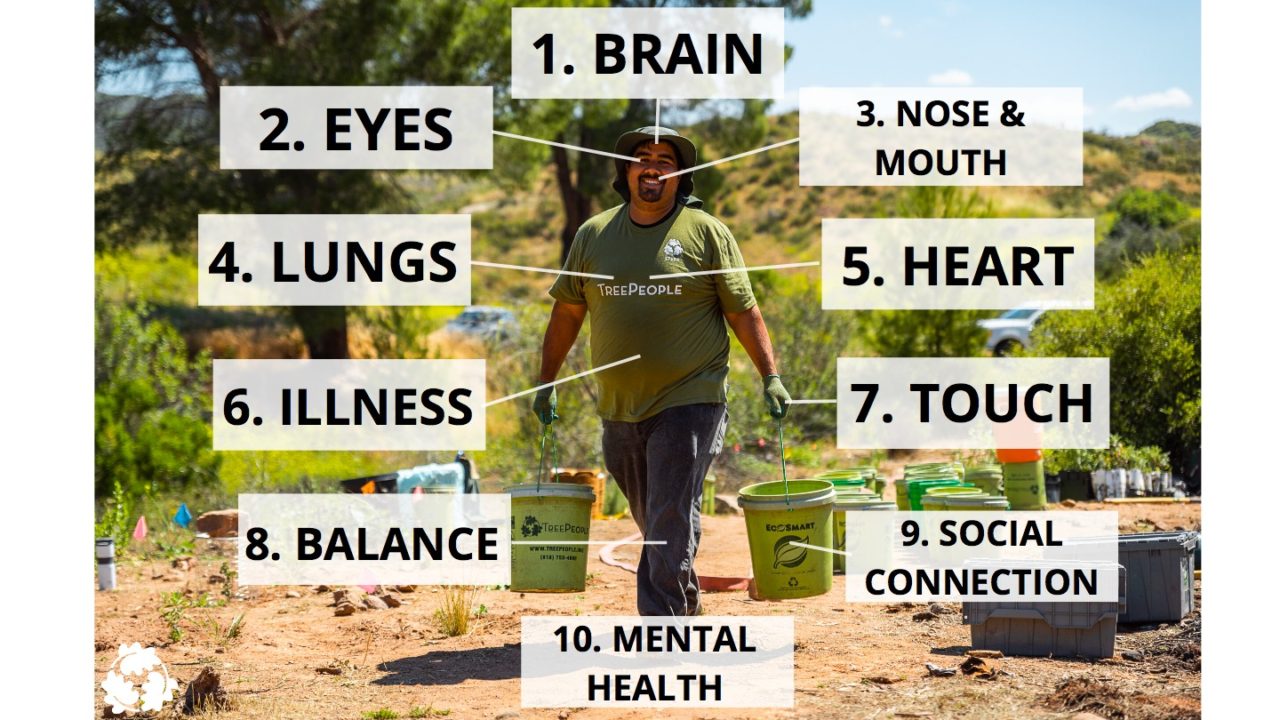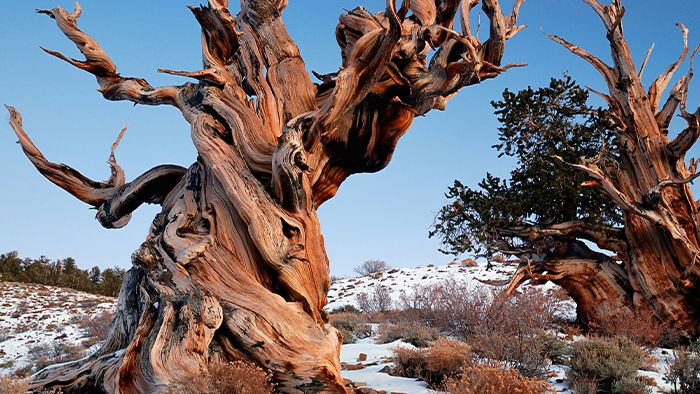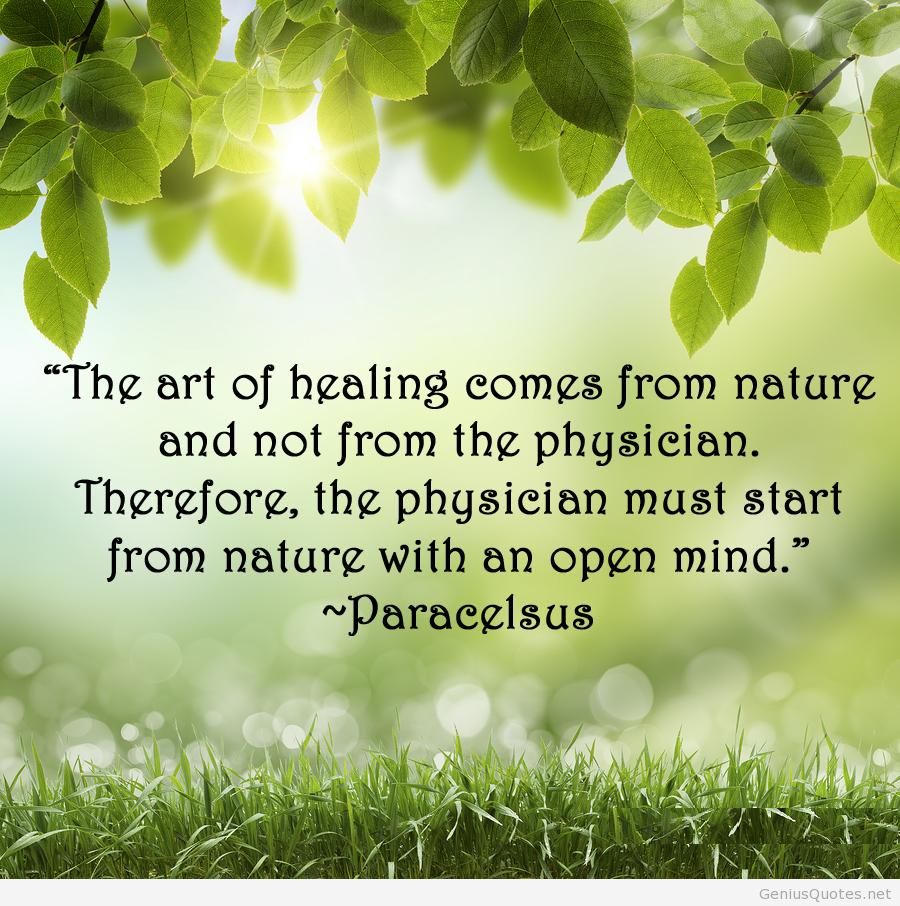This posting was updated on 6 October 2023
Sycamore Gap was criminally cut down: Long LiveThe Healing Power of Trees

Photo credit: National Trust
‘Spectacular ancient trees stir deep feelings, as the felling of Sycamore Gap showed.’
‘The act of vandalism in which Northumberland’s famous Sycamore Gap tree was felled last month has produced an outpouring of love and grief. Locals and tourists have shared their memories of the 300-year-old former winner of England’s tree of the year competition, which stood in a gap in Hadrian’s Wall…’- Hannah Jane Parkinson
To celebrate the life of Sycamore Gap and to honour all the trees and their contributions to our health and wellbeing, I wish to offer the following:
“Did you know that trees talk? Well they do. They talk to each other, and they’ll talk to you if you listen. Trouble is, white people don’t listen. They never listen to the Indians so I don’t suppose they’ll listen to other voices in nature. But I have learned a lot from trees: sometimes about the weather, sometimes about animals, sometimes about the Great Spirit.”~ Tatanga Mani (Walking Buffalo)

LISTENING TO TREES (2012), a painting by Dudley Via Artmajeur
‘How do you listen to a tree?
Not with your ears, only—
But with your whole being.
A tree is a presence to whom you open,
A friend with whom you sit,
A sage from whom you learn
To listen to a tree
Is to return
To original simplicity,
Basic sanity--
Old Lao Tzu's “uncarved block."
How do you listen to a tree?
With hushed expectancy—
As when a mother, awake in the dark,
Listens for her infant’s cry.
With soaring harmony--
As when a singer, losing self,
Becomes the song.
Losing self,
Become the tree.’- Donald P. St. John
'An ash surrounded by gravestones in an ancient churchyard reveals humanity’s urge to tell its own stories through trees'
'Did you know trees and nature have the power to heal us from head to toe?'

Photo:The Healing Power of Trees
Our Heritage is Arboreal and interwoven with the Life of Trees, OUR BEST ALLY FOR THE CLIMATE and GOOD HEALTH
With so much environmental degradation, deforestation, droughts, floods and global warming all around us, the pertinent question must be: Why are trees so important?
‘Trees belong to humanity’s heritage, but they are more than that. Their loss, through catastrophic fires or under business-as-usual, is devastating to many forms of life’.
Stop, Look and Listen: Are trees telling us stories about nature, how to live, the climate crisis, and how to build a better world?
Trees Are The Living Library of Life

Cypress Trees, Caddo Lake.-Photo:Pinterest
Moved by this fact, I would like to start this posting with a beautiful poem about trees:
“When I am Among the Trees” By Mary Oliver
When I am among the trees,
especially the willows and the honey locust,
equally the beech, the oaks and the pines,
they give off such hints of gladness.
I would almost say that they save me, and daily.
I am so distant from the hope of myself,
in which I have goodness, and discernment,
and never hurry through the world
but walk slowly, and bow often.
Around me the trees stir in their leaves
and call out, “Stay awhile.”
The light flows from their branches.
And they call again, “It's simple,” they say,
“and you too have come
into the world to do this, to go easy, to be filled
with light, and to shine.”
‘Trees and tree products have long been central to human life and culture, taking on intensified significance during the long eighteenth century. As basic raw material they were vital economic resources, objects of international diplomatic and commercial exchange, and key features in local economies. In an age of ongoing deforestation, both individuals and public entities grappled with the complex issues of how and why trees mattered.’-Invaluable Trees: Cultures of Nature, 1660-1830
Read more on The healing power of trees
The Healing Power of Trees Spiritual Journeys
TREES: OUR BEST ALLY FOR THE CLIMATE
‘The world’s forests absorb 30% of the CO2 we emit every day. Restoration of forests and soils can almost double the absorption of CO2. Healthy forests remain our best ally to achieve a zero CO2 objective. Restoring forests allows everyone to offset their daily footprint on the planet and brings us one step closer to climate protection...We all benefit from forests, wherever they are in the world. We depend on forests for the air we breathe and our water. Forests are home to 80% of the terrestrial biodiversity. Forest loss can have a devastating impact on human health. They protect us from disease-causing pathogens such as viruses or bacteria, with which we have previously had no contact. 1 in 3 outbreaks of new and emerging diseases is associated with forest loss and other land-use changes…’- Arboreal Life
With so much environmental degradation, deforestation, droughts, floods and global warming all around us, the pertinent question must be: Why are trees so important?
I can do no better than hope to let 'The Royal Parks' answer the question.
'Trees are vital. As the biggest plants on the planet, they give us oxygen, store carbon, stabilise the soil and give life to the world’s wildlife. They also provide us with the materials for tools and shelter.
Not only are trees essential for life, but as the longest living species on earth, they give us a link between the past, present and future.
It’s critical that woodlands, rainforests and trees in urban settings, such as parks, are preserved and sustainably managed across the world.
Trees benefit health
The canopies of trees act as a physical filter, trapping dust and absorbing pollutants from the air. Each individual tree removes up to 1.7 kilos every year. They also provide shade from solar radiation and reduce noise.
Over 20 species of British trees and shrubs are known to have medicinal properties. The oil from birch bark, for example, has antiseptic properties.
Research shows that within minutes of being surrounded by trees and green space, your blood pressure drops, your heart rate slows and your stress levels come down.
Trees benefit the environment
Trees absorb carbon dioxide as they grow and the carbon that they store in their wood helps slow the rate of global warming.
They reduce wind speeds and cool the air as they lose moisture and reflect heat upwards from their leaves. It’s estimated that trees can reduce the temperature in a city by up to 7°C.
Trees also help prevent flooding and soil erosion, absorbing thousands of litres of stormwater.
Trees boost wildlife
Trees host complex microhabitats. When young, they offer habitation and food to amazing communities of birds, insects, lichen and fungi. When ancient, their trunks also provide the hollow cover needed by species such as bats, woodboring beetles, tawny owls and woodpeckers.
One mature oak can be home to as many as 500 different species. Richmond Park is full of such trees, which is one of the reasons it has been designated a National Nature Reserve and Site of Special Scientific Interest.
Trees strengthen communities
Trees strengthen the distinctive character of a place and encourage local pride. Urban woodland can be used as an educational resource and to bring groups together for activities like walking and bird-watching. Trees are also invaluable for children to play in and discover their sense of adventure.
Trees grow the economy
People are attracted to live, work and invest in green surroundings. Research shows that average house prices are 5-18% higher when properties are close to mature trees. Companies benefit from a healthier, happier workforce if there are parks and trees nearby.
Trees protect the future
Soon, for the first time in history, the number of people with homes in cities will outstrip those living in the countryside. Parks and trees will become an even more vital component of urban life. We must respect them and protect them for the future.’-The Royal Parks
Trees and the web of life
The Tree of Life (ToL) is a widely used metaphor to describe the history of life on Earth.

Tree of Life Web of Life Art Print by Tree of Life Shop
"The affinities of all the beings of the same class have sometimes been represented by a great tree... As buds give rise by growth to fresh buds, and these if vigorous, branch out and overtop on all sides many a feebler branch, so by generation I believe it has been with the great Tree of Life, which fills with its dead and broken branches the crust of the earth, and covers the surface with its ever branching and beautiful ramifications."- Charles Darwin, 1859
The 18 Most Memorable Trees in Literature

Photo: Literary Hub
‘They were there at the beginning, trees in literature, centuries before humans had the idea of putting literature on (the pulped, bleached, and pressed remains of) trees. The Tree of Jiva and Atman in Vedic scripture, the Tree of Life in the Hebrew Bible, the withered poplars of the I Ching. Trees are bigger than us and they usually outlive us—no wonder they loom large in our imagination…’- Continue to read
See also: Celebrating the tree of life that has shaped human history and civilisation
“Potentially, every tree is immortal.”
A fascinating and captivating read on the music of trees and the arboreal science of immortality

Bristlecone pines can live for 5,000 years.(Wikimedia)
“In their highest boughs the world rustles, their roots rest in infinity; but they do not lose themselves there, they struggle with all the force of their lives for one thing only: to fulfill themselves according to their own laws… to represent themselves. Nothing is holier, nothing is more exemplary than a beautiful, strong tree.”-Hermann Hesse
‘Hermann Hesse believed that if we could learn to listen to the trees, we would achieve a profound perspective on our human lives by grasping the deepest meaning of aliveness. He used listening in the metaphorical sense. But the great existential gift of trees — to us in the metaphors they furnish, and to themselves in the materiality of survival — might indeed be a kind of musicality, accounting for their virtuosity at resilience: beyond “the blind optimism” of a tree’s poetic enchantment lies a supersense for listening to the world and responding with inspired ingenuity, encoded with singular wisdom on how to live and how to die…’- The Music of Trees: Improvisation, Iteration, and the Science of Immortality
Old trees and what they can teach us

The Tree of Wisdom, Old whimsical tree in the Wicklow forest, Ireland.- Photo by Jenny Rainbow: fineartamerica.com
‘While humans are all too familiar with the ravages of getting older, many trees seem to handle ageing a lot better. Certain trees can live for thousands of years and appear to be immortal.
But not everyone is convinced these old timers can escape death due to old age. Regardless, could humans with their relatively puny lifespans have something to learn from these ancient trees?’-Are very long-lived trees immortal and what can they teach humans?
IN PRAISE OF TREES: THE HEALING POWERS OF FORESTS
Whether we 'forest-bathe', ‘tree-hug’, walk or cycle through them, or sit back and watch nature, there is something powerful about forests.

Deep tropical jungles of Southeast Asia.-Photo: Wanderlust
‘Healing power of nature – it was once the preserve of tree hugging hippies. Today, nature’s powerful potential to heal mind, body and spirit is recognised by science. Being in nature makes you feel good. And, surprisingly, nature’s powers extend beyond wellbeing to the healing of social and economic problems too.
‘Humans have long been deeply moved by a still expanse of water, a deep forest, a mountain peak. After all, nature is where we find our soul and come into contact with our spirituality. Yet, most of people today live in cities and spend far less time outside in green, natural spaces than the populations of only a few generations ago.’-Amy Garner- Let’s Go to the Woods When Life Feels Overwhelming and Impossible

Paracelsus (c. 1493– 24 September 1541), was a Swiss physician, alchemist, lay theologian,
and philosopher of the German Renaissance.
Wellbeing by Sir Water Scott: A man who understood the healing power of nature.

Abbotsford the home of sir walter scott.-Photo:Wikipedia
‘He knew that to live well, and to safeguard mental and physical wellbeing, a person needs to be able to access and enjoy the natural world. The benefits of physical activity and open air, and the opportunities for conversation, companionship and creativity that such outdoor activities presented, were all championed by Scott two hundred years before they found their way into the health and social policy so topical today.’- Continue to read
Poetry, Nature and Wellbeing with William Wordsworth, The first eco-warrior
The great champion of plain speech (“the language really used by men”), the radical poet of empathy with those on the margins and the rural poor, the most persuasive of all environmentalists.
“Nature is a teacher whose wisdom we can learn, and without which any human life is vain and incomplete.”
‘Embrace me then, ye Hills, and close me in; Now in the clear and open day I feel Your guardianship; I take it to my heart; ’Tis like the solemn shelter of the night.’ - Home at Grasmere, William Wordsworth.

Grasmere and Grasmere Village from Loughrigg. Picture by Tony Richards.
‘‘As a poet of Nature, Wordsworth stands supreme. He is a worshipper of Nature, Nature’s devotee or high-priest. His love of Nature was probably truer, and more tender, than that of any other English poet, before or since. Nature comes to occupy in his poem a separate or independent status and is not treated in a casual or passing manner as by poets before him. Wordsworth had a full-fledged philosophy, a new and original view of Nature…’-On the 250th Birthday of William Wordsworth Let Nature be our Wisest Teacher
A selected further reading on similar topics from our GCGI archive:

Photo: pinterest
Land As Our Teacher: Rhythms of Nature Ushering in a Better World
‘Nature and Me’: ‘Nature as a Cure for the Sickness of Modern Times’
Embrace the Spirituality of the Autumn Equinox and Discover What it Means to be Human
Are you physically and emotionally drained? I know of a good solution!
Let’s Go to the Woods When Life Feels Overwhelming and Impossible
The Inspiring Story of a Giant Sequoia (Mammoth Tree) of California
World in Chaos: The Healing Power of Gardens
A Sure Path to build a Better World: How nature helps us feel good and do good
Happy International Day of Forests 21 March 2018
Neoliberalism and the death of Nature in Sheffield and the world over
In Search of Well-being, Joy and Happiness: ‘Nature and ‘Forest Bathing’ is the Path
Izaak Walton: Our Stepping Stones to Pastoral Paradise, Serenity and Beauty
Nature the Best Teacher: Re-Connecting the World’s Children with Nature
Hope is the torch that shines light on the plague of darkness

Bereshit’ by Yoram Raanan
‘God planted a garden in Eden. (Genesis 2:8)
The name “Eden” means “delight.” In the Garden of Eden “the gold of the land was good” and the earth shone with gemstones. All the waters of the world are said to have originated in the Garden of Eden. Adam and Eve were surrounded by rivers that flowed with the knowledge of God, and they could see from one end of the world to the other. It is said that the earth is one- sixtieth of the Garden of Eden.’-Yoram Raanan
The Garden of Eden has since ancient times been imbued with powerful symbolism and layers of meaning. It is both a boundary and a crossing point, a metaphor for spiritual rebirth and salvation, a shared resource and a source of holy water and life. It is the same with our GCGI spiritual values, meaning and work, waters that quench our real thirst and awaken us to the miracles available in every moment, every day, in all we do and hope for...'- COP26 Glasgow: Hope and Humanity to Save Our Mother Earth and Nature, History Will Judge the Complicit
And now, I very much hope that, given what we now know about trees, as noted in this piece, we will never look at trees in the same light again and we will never take them for granted.
To my mind, it is time for us to show humility and accept the fact that trees are far cleverer and wiser than we are.
Given the state of the world we have created, it seems it is better and wiser if we begin listening to trees, their music and symphony. Trees can teach us, heal us and they can heal our mother nature too.
